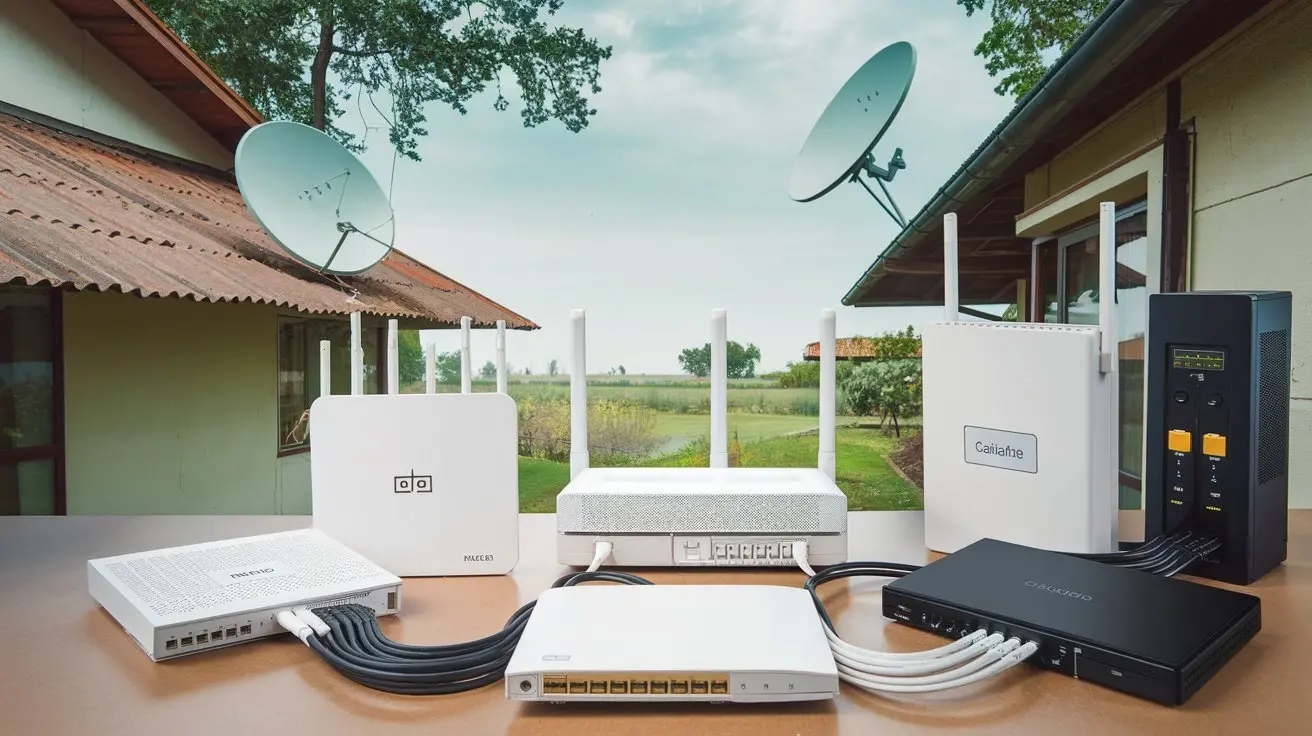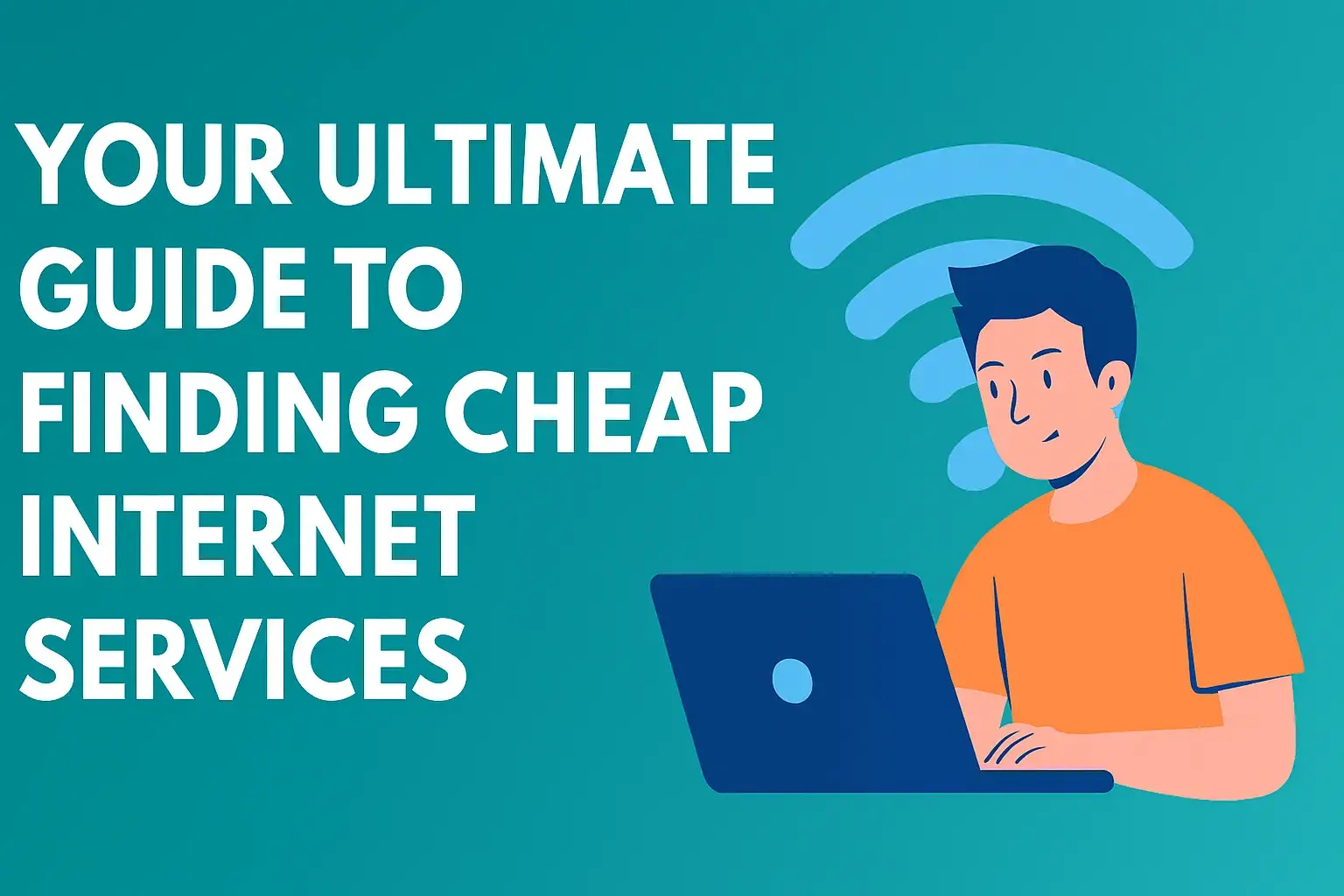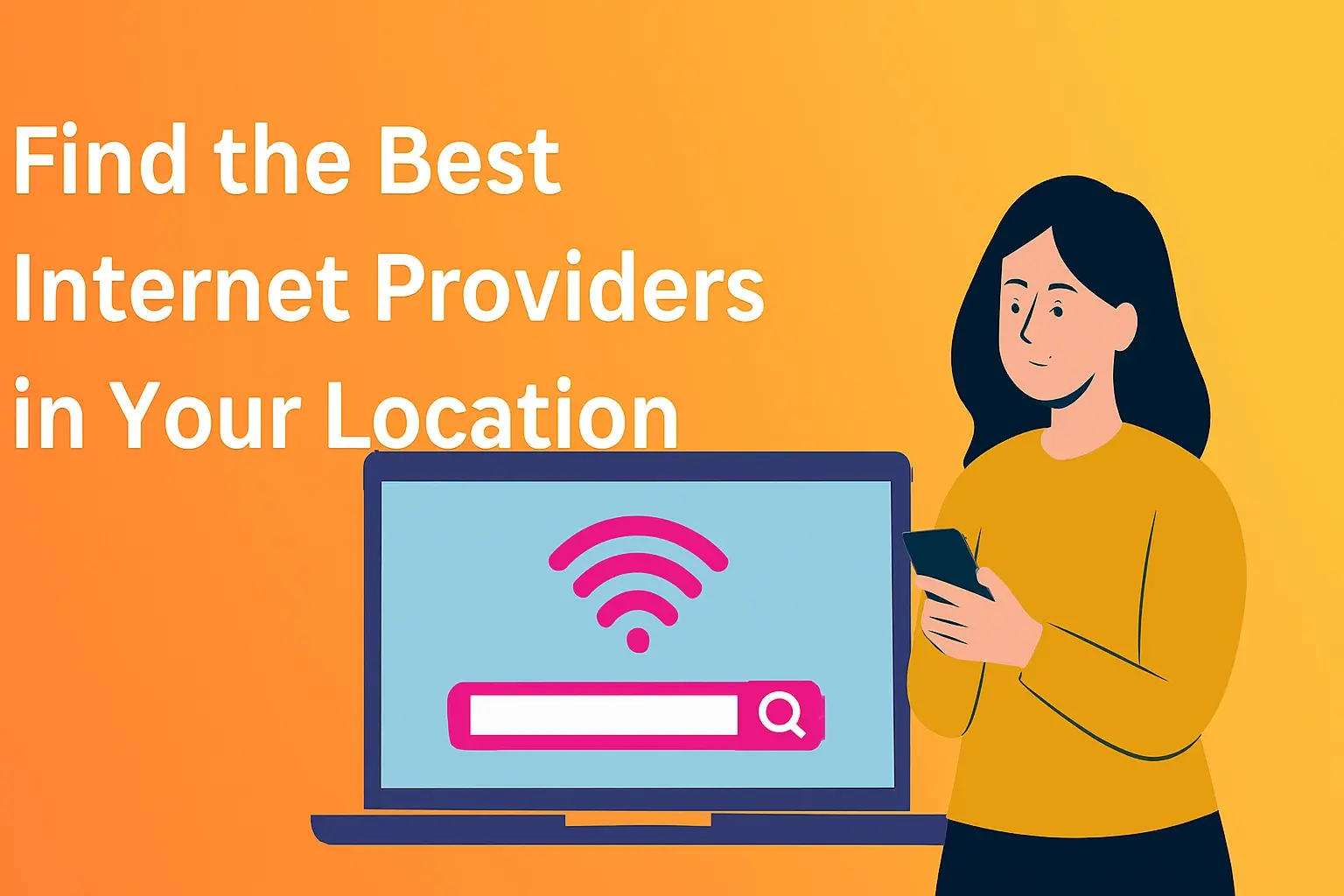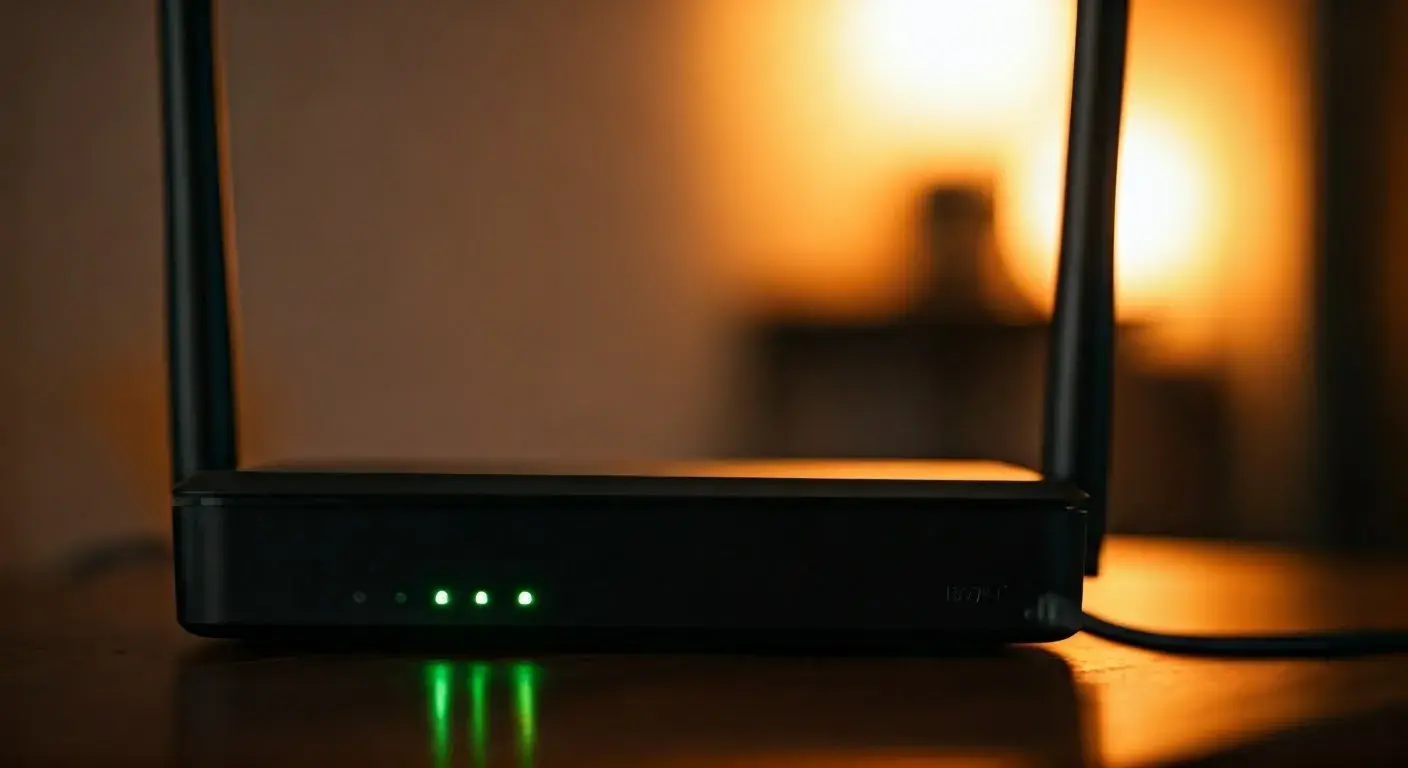Can You Have 2 Internet Providers in 1 House?

Can You Have 2 Internet Providers in 1 House? The Definitive Guide
Yes, you absolutely can have two internet providers in one house. This setup, often referred to as dual-internet or a redundant internet connection, offers significant benefits for reliability, speed, and flexibility, especially for households with high demands. This guide explores the feasibility, setup, and advantages.
Why Consider Dual Internet Providers?
In today's digitally dependent world, a single internet connection can feel like a single point of failure. For many, internet service isn't just for entertainment; it's crucial for work, education, communication, and even essential services. A dual-internet setup addresses this vulnerability by providing a backup or complementary connection.
Enhanced Reliability and Uptime
The most compelling reason for a dual-internet setup is the dramatic increase in reliability. Internet outages, whether due to equipment failure, maintenance, severe weather, or provider issues, can be incredibly disruptive. With two independent connections from different providers, if one goes down, the other can seamlessly take over, ensuring continuous connectivity.
For remote workers, this means no missed video conferences, no lost work files, and no interruptions to critical tasks. For families, it ensures that streaming services, online gaming, and smart home devices remain operational. In 2025, with the increasing reliance on cloud-based services and IoT devices, maintaining constant uptime is more important than ever.
Increased Bandwidth and Speed
Beyond redundancy, dual internet can also be used to aggregate bandwidth, effectively doubling your total internet speed. This is particularly beneficial for households with multiple users simultaneously engaging in high-bandwidth activities like:
- 4K/8K video streaming
- Online gaming with low latency requirements
- Large file downloads and uploads (e.g., video editing, cloud backups)
- Running multiple smart home devices that consume significant data
- Supporting a home-based business with high network traffic
By distributing traffic across two connections, you can significantly reduce buffering, lag, and download times, creating a smoother and more responsive online experience for everyone.
Load Balancing and Traffic Management
A dual-internet setup allows for sophisticated load balancing. This means you can configure your network to distribute internet traffic across both connections. For instance, you might send streaming traffic through one provider and work-related traffic through another, ensuring that neither connection becomes overloaded. This intelligent management can optimize performance for different types of online activities.
Provider Diversity and Avoiding Monopolies
In some areas, residents may have limited choices for high-speed internet, often dominated by a single provider. Having two providers, even if one offers a slower speed, provides a valuable alternative. It also leverages competition, potentially leading to better service and pricing in the long run.
Common Scenarios for Dual Internet Providers
The decision to implement a dual-internet setup is often driven by specific needs and circumstances. Here are some of the most common scenarios where this configuration proves invaluable:
The Remote Worker's Lifeline
For individuals who work from home full-time, a stable and reliable internet connection is non-negotiable. A dropped connection during an important client meeting or while uploading a critical file can have serious professional repercussions. Dual internet provides a safety net, ensuring that work continues uninterrupted even if one provider experiences an outage. Many remote workers prioritize a high-speed, low-latency connection for their primary work, while a secondary, perhaps less expensive, connection serves as a robust backup.
The Connected Family Hub
Modern households are increasingly saturated with internet-dependent devices. From smart TVs and gaming consoles to tablets, smartphones, and smart home assistants, the demand for bandwidth is constant and often simultaneous. In a busy family environment, a single internet connection can quickly become a bottleneck, leading to frustration. Dual internet can alleviate this by providing enough capacity for multiple users to stream, game, and browse without impacting each other's experience.
The Home-Based Business Owner
Entrepreneurs and small businesses operating from home rely heavily on their internet for everything from customer communication and e-commerce to cloud-based software and data backups. Downtime can mean lost sales, missed opportunities, and damage to reputation. A dual-internet setup ensures business continuity, offering peace of mind that critical operations will remain online.
The Tech Enthusiast and Gamer
For avid online gamers, low latency and consistent speeds are paramount. A single dropped connection or a sudden spike in ping can ruin a gaming session. Dual internet can be configured to prioritize gaming traffic on the most stable or fastest connection, while other household activities utilize the second. Furthermore, some advanced setups can even aggregate bandwidth for faster game downloads.
The Rural or Underserved Area Resident
In regions where internet service options are limited or unreliable, having two different providers can be a strategic move. If the primary provider is prone to outages or offers subpar speeds, a secondary connection, even if it's a different technology (e.g., DSL as a backup to cable), can significantly improve overall connectivity and provide a fallback option.
The Content Creator
Video editors, streamers, and other content creators often deal with massive file sizes and require consistent, high-speed uploads and downloads. Dual internet can drastically reduce the time spent uploading large projects to cloud storage or delivering live streams, making their workflow more efficient.
How to Set Up Dual Internet Providers in Your Home
Setting up two internet connections in a single home involves more than just plugging in two modems. It requires specific hardware and configuration to manage both connections effectively. Here’s a breakdown of the common methods:
Method 1: Using a Dual-WAN Router
This is the most common and recommended method for home users. A Dual-WAN (Wide Area Network) router is specifically designed to handle multiple internet connections simultaneously. These routers typically have two or more WAN ports, allowing you to connect two different modems from two different internet service providers (ISPs).
Step-by-Step Guide:
- Acquire a Dual-WAN Router: Purchase a router that explicitly supports Dual-WAN functionality. Popular brands include TP-Link, ASUS, Ubiquiti, and DrayTek. Ensure it meets your speed and feature requirements.
- Install Your First Internet Connection: Set up your first ISP's modem and connect it to one of the WAN ports on the Dual-WAN router. Configure the router to establish a connection with this ISP.
- Install Your Second Internet Connection: Set up your second ISP's modem and connect it to the second WAN port on the Dual-WAN router.
- Configure the Dual-WAN Router: Access the router's administrative interface (usually via a web browser). Navigate to the WAN settings. Here, you will configure the second connection.
- Set Up Load Balancing or Failover: This is the crucial step. Most Dual-WAN routers offer two primary modes:
- Load Balancing: This mode distributes outgoing traffic across both internet connections. You can often set rules to balance traffic based on application type, source IP, or simply divide it evenly. This increases overall available bandwidth.
- Failover: This mode designates one connection as primary and the other as a backup. If the primary connection fails, the router automatically switches all traffic to the secondary connection. This ensures maximum uptime.
- Connect Your Devices: Connect your computers, smart TVs, gaming consoles, and other devices to the Dual-WAN router via Ethernet cables or Wi-Fi. The router will manage which connection each device or traffic type uses based on your configuration.
Pros of Dual-WAN Router:
- Centralized management of both connections.
- Sophisticated load balancing and failover options.
- Simplifies network configuration for end-users.
- Often provides advanced security features.
Cons of Dual-WAN Router:
- Requires purchasing specialized hardware.
- Can be more complex to set up than a single router.
- Higher initial cost.
Method 2: Using Two Separate Routers (Less Ideal)
While technically possible, this method is generally less efficient and harder to manage for true redundancy or load balancing. It involves using two separate modems, each connected to its own router. Devices would then need to be manually connected to one router or the other, or a more complex network setup would be required.
How it might work (simplified):
- Connect Modem A to Router A.
- Connect Modem B to Router B.
- Connect devices to either Router A or Router B.
This setup doesn't offer automatic failover or intelligent load balancing. You would essentially have two independent networks within your home. To achieve any form of combined benefit, you'd need advanced networking knowledge and potentially additional hardware like a firewall or managed switch to route traffic between the two networks.
Pros of Two Separate Routers:
- Can utilize existing equipment if you already have multiple routers.
Cons of Two Separate Routers:
- No automatic failover between connections.
- No true load balancing; manual device assignment is often required.
- Difficult to manage and troubleshoot.
- Limited ability to aggregate bandwidth.
For most users seeking the benefits of dual internet, a Dual-WAN router is the superior and more practical solution.
Method 3: Using a Dedicated Network Appliance/Firewall
For businesses or advanced home users with complex networking needs, a dedicated multi-WAN firewall or network appliance can provide the most robust solution. These devices offer advanced routing, security, and management capabilities, including sophisticated load balancing and failover algorithms.
Pros of Dedicated Appliance:
- Highest level of control and customization.
- Advanced security features.
- Scalable for growing needs.
Cons of Dedicated Appliance:
- Significantly more expensive than consumer routers.
- Requires advanced networking expertise to configure and manage.
- Overkill for most residential users.
Connecting Devices:
Once your Dual-WAN router is set up, you connect your devices to it. The router handles directing traffic. For failover, it automatically switches. For load balancing, it distributes traffic. Some advanced users might hardwire critical devices (like gaming PCs or work computers) directly to the router via Ethernet for the most stable connection, while other devices connect via Wi-Fi.
Choosing the Right Providers for Your Needs
Selecting the right internet service providers (ISPs) for your dual-internet setup is crucial for maximizing benefits and minimizing potential issues. Consider the following factors:
Technology Diversity
The most robust dual-internet setup often involves using two different types of internet technology. This minimizes the chance that a single type of infrastructure failure will affect both your connections.
- Fiber Optic: Offers the highest speeds and lowest latency. Ideal for primary connection if available.
- Cable Internet: Widely available, offers good speeds, and is a strong contender for primary or secondary connection.
- DSL (Digital Subscriber Line): Utilizes existing phone lines. Generally slower than fiber or cable but can be a reliable backup, especially in areas where cable/fiber is unreliable.
- Fixed Wireless: Uses radio waves to connect to a tower. Speeds can vary, but it can be a good option in rural areas where wired options are scarce.
- Satellite Internet: Typically has higher latency and is more susceptible to weather, making it less ideal for primary use but can serve as a last resort backup.
Example: Pairing a high-speed Fiber connection with a Cable connection offers excellent speed and reliability. Alternatively, pairing a Cable connection with a DSL connection provides a solid fallback if cable service is interrupted.
Speed and Bandwidth Requirements
Assess your household's typical internet usage. For remote work and heavy streaming, prioritize higher speeds. For a backup connection, a lower-speed, more affordable plan might suffice.
- Primary Connection: Aim for speeds that comfortably handle your most demanding activities (e.g., 300 Mbps+ for fiber/cable).
- Secondary Connection: Can be a lower-tier plan (e.g., 50-100 Mbps for DSL/cable) if its primary role is backup.
Reliability and Uptime History
Research the reputation of ISPs in your area for reliability. Look for customer reviews and reports on local outages. Choosing two providers with different infrastructure networks can also mitigate risks. For instance, if one ISP uses a particular cable backbone that is prone to issues, selecting a provider that doesn't rely on the same infrastructure is wise.
Cost and Contract Terms
Running two internet services will naturally increase your monthly bill. Compare pricing plans carefully. Look for introductory offers, but be mindful of contract lengths and early termination fees. Consider the total cost of ownership, including any equipment rental fees.
In 2025, many ISPs offer promotional pricing for new customers. Bundling services might also offer discounts, though this is less common when intentionally seeking two separate providers.
Customer Service
When you have two providers, you'll likely interact with their customer service more frequently, especially during setup or troubleshooting. Choose providers known for responsive and helpful support.
Geographic Availability
Not all technologies are available everywhere. Check which ISPs offer which services at your specific address. You might find that your best dual-internet options involve combining a major provider with a smaller, regional one.
Comparison Table: Internet Technologies for Dual Setup (2025 Overview)
| Technology | Typical Speeds (Download/Upload) | Latency | Reliability | Best Use Case |
|---|---|---|---|---|
| Fiber Optic | 1 Gbps - 10 Gbps / 1 Gbps - 10 Gbps | Very Low (5-20 ms) | High | Primary connection for high-demand users. |
| Cable Internet | 100 Mbps - 2 Gbps / 10 Mbps - 100 Mbps | Low (20-50 ms) | Moderate to High (can be affected by neighborhood congestion) | Primary or secondary connection; good balance of speed and availability. |
| DSL | 10 Mbps - 100 Mbps / 1 Mbps - 10 Mbps | Moderate (50-100 ms) | Moderate to High (depends on distance from exchange) | Reliable secondary connection or primary for basic needs. |
| Fixed Wireless | 25 Mbps - 300 Mbps / 5 Mbps - 50 Mbps | Low to Moderate (20-80 ms) | Moderate (can be affected by line-of-sight and weather) | Good alternative in rural areas, especially as a secondary connection. |
| Satellite Internet | 25 Mbps - 100 Mbps / 3 Mbps - 10 Mbps | High (500-700 ms) | Moderate (susceptible to weather) | Last resort backup in extremely remote locations. |
Potential Challenges and Solutions
While the benefits of dual internet are substantial, implementing and managing it can present a few challenges. Understanding these and their solutions will ensure a smoother experience.
Complexity of Setup and Configuration
Challenge: Setting up a Dual-WAN router and configuring load balancing or failover rules can be daunting for users unfamiliar with networking concepts. Incorrect configuration can lead to one or both connections not working as intended.
Solution:
- Choose a User-Friendly Router: Opt for Dual-WAN routers known for their intuitive interfaces and clear setup wizards.
- Consult Documentation and Online Resources: Most router manufacturers provide detailed user manuals, online knowledge bases, and community forums.
- Seek Professional Help: If you're uncomfortable with the technical aspects, consider hiring a local IT professional or network consultant to set up the system for you.
- Start Simple: Begin with a basic failover setup before diving into complex load balancing rules.
Managing Two Bills and Accounts
Challenge: You'll be managing two separate accounts, two sets of billing statements, and potentially two different customer support teams. This can lead to administrative overhead and the risk of missing payments or overlooking billing errors.
Solution:
- Automate Payments: Set up automatic bill payments for both ISPs to avoid late fees and ensure continuity.
- Use a Spreadsheet or App: Keep track of billing cycles, due dates, and monthly costs in a dedicated spreadsheet or budgeting app.
- Understand Contract Terms: Be fully aware of the contract length, data caps (if any), and cancellation policies for each provider.
IP Address Management
Challenge: Most home users receive dynamic IP addresses from their ISPs, which can change periodically. While this usually isn't an issue for general browsing, it can be problematic for remote access to home servers or devices (like security cameras or NAS drives) that rely on a consistent IP address.
Solution:
- Static IP Addresses: Some ISPs offer static IP addresses for an additional fee. This guarantees your IP address won't change.
- Dynamic DNS (DDNS): For most users, a Dynamic DNS service is a more cost-effective solution. DDNS services link a domain name (e.g., yourhome.ddns.net) to your dynamic IP address. When your IP changes, a small client on your network updates the DDNS service, ensuring your domain name always points to your current IP. Your Dual-WAN router might have built-in DDNS support.
- ISP-Provided Routers: If your ISPs provide their own routers, ensure they can be put into "bridge mode" so your Dual-WAN router can manage the connection and IP addressing.
Potential for Congestion on Shared Networks
Challenge: Cable and DSL internet are often shared resources within a neighborhood. If many users on the same network are heavily using their internet simultaneously, speeds can degrade. This means even your secondary connection might experience slowdowns during peak hours.
Solution:
- Choose Providers with Different Infrastructure: As mentioned earlier, pairing different technologies (e.g., Fiber and Cable) reduces the chance of shared infrastructure issues.
- Schedule High-Bandwidth Activities: If possible, schedule large downloads or uploads during off-peak hours (late night or early morning).
- Monitor Performance: Regularly test your internet speeds on both connections to identify any persistent issues.
Cost of Hardware
Challenge: A good Dual-WAN router can be a significant upfront investment compared to a standard single-WAN router. This cost needs to be factored into the overall decision.
Solution:
- Research and Compare: Shop around for Dual-WAN routers that fit your budget and technical requirements. Prices can range from $100 to $500+ depending on features and brand.
- Consider Refurbished or Older Models: Sometimes, slightly older but still capable Dual-WAN routers can be found at a discount.
- Factor in Long-Term Value: The increased reliability and performance can justify the initial hardware cost, especially for businesses or critical home users.
Cost Considerations for Dual Internet
Implementing a dual-internet setup involves several cost factors beyond just the monthly subscription fees for the internet services themselves. It's essential to budget for these to understand the true financial commitment.
Monthly Subscription Fees
This is the most obvious cost. You will be paying for two separate internet plans. The total monthly cost will depend on the providers, the technologies used, and the speed tiers you select. As of 2025, typical monthly costs can range from:
- Basic DSL/Cable: $50 - $80 per month
- Mid-Tier Cable/Fiber: $70 - $120 per month
- High-Speed Fiber/Cable: $100 - $200+ per month
Therefore, two mid-tier plans could easily cost $140 - $240+ per month.
Hardware Costs
The primary hardware investment is the Dual-WAN router. Prices vary significantly:
- Entry-Level Dual-WAN Routers: $80 - $150
- Mid-Range Dual-WAN Routers: $150 - $300
- High-End/Prosumer Dual-WAN Routers: $300 - $600+
You might also need to purchase additional Ethernet cables and potentially a network switch if you have many wired devices.
Installation Fees
Some ISPs charge an installation fee for new service. This can range from $50 to $150 per connection, depending on the provider and the complexity of the installation.
Potential for Static IP Addresses
If you require static IP addresses for your home network (e.g., for hosting servers or advanced remote access), ISPs typically charge an additional monthly fee. This can add $10 - $30 per month per static IP address.
Equipment Rental Fees
While many ISPs allow you to use your own compatible modems, some may require you to rent their equipment. If you're using two different ISPs, you might be renting two modems, adding to your monthly costs. It's often more cost-effective in the long run to purchase your own compatible modems if allowed.
Total Estimated Cost (First Year):
Let's estimate for a common scenario: one mid-tier cable internet ($80/month) and one mid-tier DSL internet ($60/month), plus a mid-range Dual-WAN router ($200) and one-time installation fees ($100 x 2 = $200).
- Monthly Internet: ($80 + $60) * 12 months = $1680
- Hardware: $200
- Installation: $200
- Total First Year Cost: $1680 + $200 + $200 = $2080
- Subsequent Years: Approximately $1680 per year.
This example highlights that while the monthly fees are the largest ongoing expense, the initial hardware investment is also a significant consideration. It's crucial to weigh these costs against the benefits of enhanced reliability and performance.
Alternatives to Dual Internet Providers
While dual internet offers significant advantages, it's not the only solution for improving internet reliability and speed. Depending on your specific needs and budget, several alternatives might be more suitable.
Mobile Hotspots and 5G Home Internet
Description: Many mobile carriers now offer high-speed 4G LTE and 5G mobile hotspots or dedicated 5G home internet services. These can serve as excellent backup connections or even primary connections in areas where wired internet is poor.
Pros:
- Portability: Mobile hotspots can be used anywhere with cellular service.
- Quick Setup: Often requires minimal setup.
- Potential for High Speeds: 5G can offer speeds comparable to cable.
- Good Backup: Can provide a reliable fallback if your primary wired connection fails.
Cons:
- Data Caps: Many mobile plans have strict data caps, which can be quickly exceeded by heavy usage.
- Latency: Can sometimes have higher latency than wired connections.
- Cost: Unlimited data plans can be expensive.
- Coverage Dependency: Reliant on cellular signal strength.
Bonding/Aggregating Services (Software-Based)
Description: Services like Speedify use software to combine multiple internet connections (e.g., Wi-Fi, Ethernet, cellular) at the device level to increase speed and reliability. This is different from hardware-based load balancing where the router manages connections.
Pros:
- Device-Level Bonding: Works on a per-device basis.
- Can Combine Different Connection Types: Useful for aggregating Wi-Fi, Ethernet, and cellular.
- Relatively Inexpensive: Subscription-based, often cheaper than a second ISP.
Cons:
- Software-Dependent: Requires software installation on each device.
- Not True Redundancy: If the primary connection fails, the software needs time to re-establish on the secondary.
- Limited to Devices with Software: Doesn't provide network-wide redundancy like a Dual-WAN router.
Upgrading Your Existing Connection
Description: Sometimes, the best solution is simply to upgrade to a faster, more reliable plan from your current ISP, or switch to a provider offering a superior technology (like fiber if available).
Pros:
- Simplicity: No complex setup or extra hardware required.
- Cost-Effective: May be cheaper than running two services.
- Single Point of Contact: Easier to manage one account.
Cons:
- Still a Single Point of Failure: If your ISP has an outage, you still lose service.
- May Not Solve Bandwidth Issues: If multiple users are constantly maxing out even a high-speed connection, it can still be a bottleneck.
Mesh Wi-Fi Systems (for Coverage, Not Redundancy)
Description: Mesh Wi-Fi systems improve Wi-Fi coverage throughout a large home but do not provide internet redundancy. They connect to a single internet modem and router.
Pros:
- Excellent Wi-Fi Coverage: Eliminates dead zones.
- Easy to Set Up: User-friendly installation.
Cons:
- No Internet Redundancy: If the main internet connection goes down, the entire mesh network goes down.
- Doesn't Increase Total Bandwidth: Only improves how Wi-Fi signals are distributed.
For those whose primary concern is a single point of failure, a mobile hotspot or 5G home internet plan as a backup is often a more straightforward and cost-effective alternative to a full dual-ISP setup. However, for true, seamless redundancy and aggregated bandwidth, a Dual-WAN router with two wired ISP connections remains the gold standard.
Conclusion: Is Dual Internet Right for You?
The question, "Can you have 2 internet providers in 1 house?" is definitively answered with a resounding yes. Implementing a dual-internet setup is not only possible but increasingly practical for households demanding unwavering connectivity and robust bandwidth. By leveraging a Dual-WAN router, you can achieve seamless failover, ensuring your online activities remain uninterrupted even during ISP outages, and enjoy the benefits of aggregated speeds for demanding applications. While the initial investment in hardware and the ongoing cost of two monthly plans are considerations, the peace of mind and enhanced digital experience for remote work, content creation, or busy family life can far outweigh these expenses. Carefully assess your household's needs, explore technology diversity among providers, and weigh the costs against the substantial benefits to determine if a dual-internet solution is the right upgrade for your home in 2025 and beyond.





